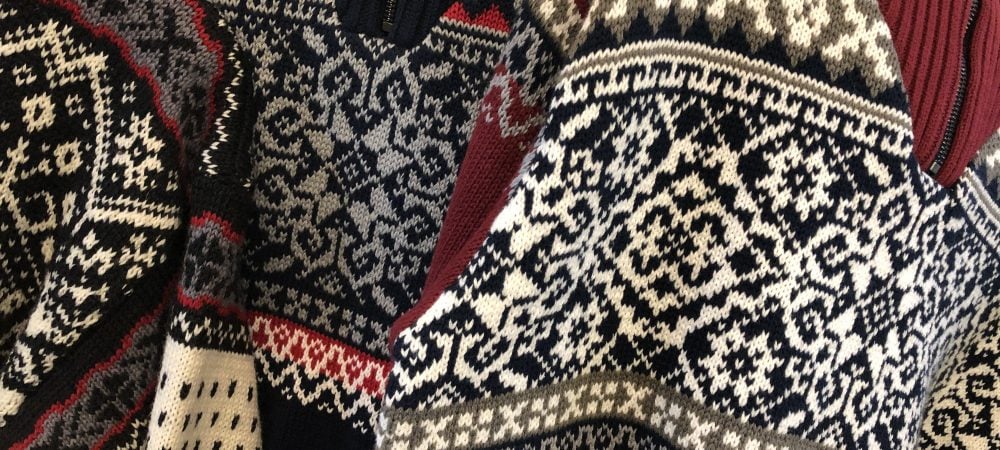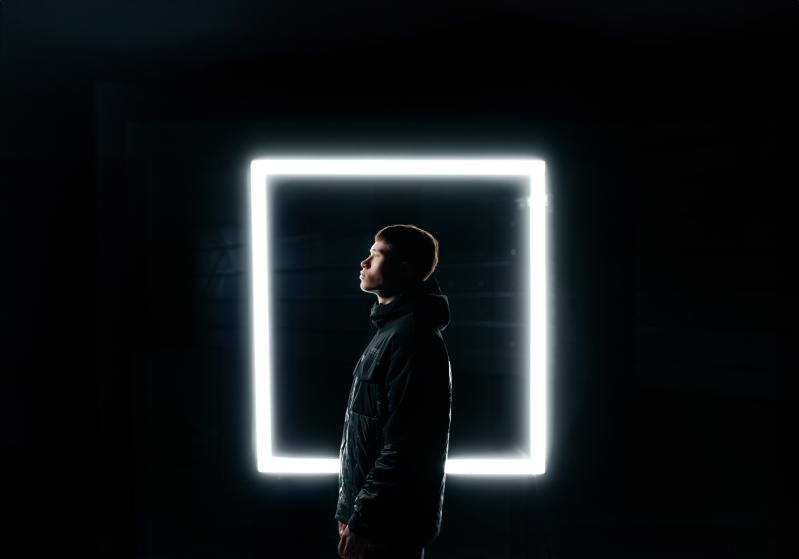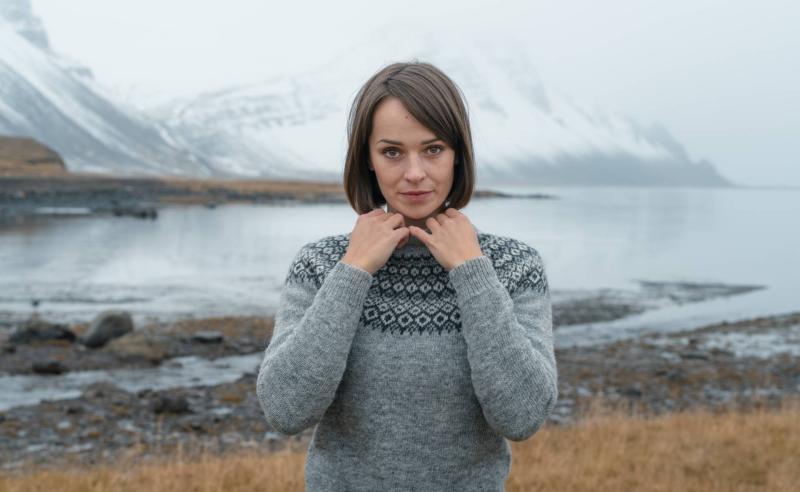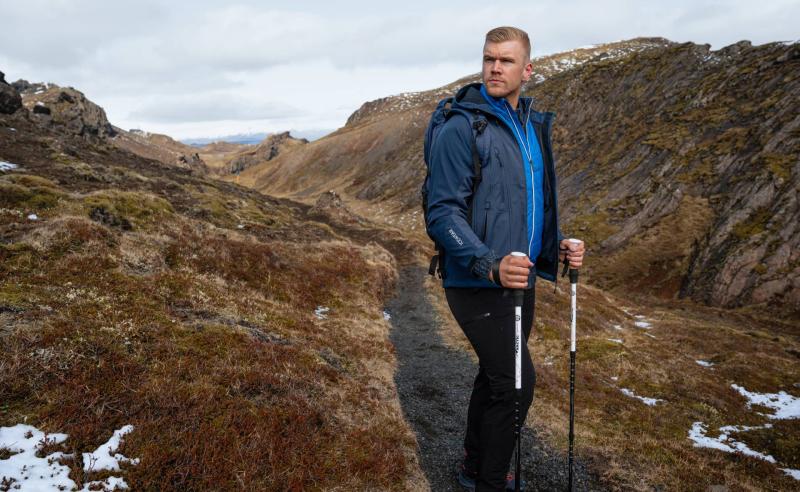The Science of Fashion: How clothing can improve and change our mood
We’ve all got those outfits and favourite clothing items that make us feel our best. But why is that? Over the years, studies have identified that aspects of clothing, such as colour, pattern, textile and style, can affect our feelings and moods. In one study, 96% of participants said their emotional state changes depending on the style of clothing they wear. We wanted to find out what can cause this and if there are some hacks people can use to dress to destress. We looked at all existing research on clothing and how it affects people to create a guide on what to wear as well as picking out some of the most interesting findings. CONTENTS:- How clothes impact mood
- Best clothing for fitness
- Best clothing for job interviews
- Best clothing to destress
- Best clothing for dating
- Which patterns are best?
- Should I buy more clothes?
- Methodology and sources
What to wear and how it impacts you
Researchers will often refer to ‘Enclosed Cognition’ a term to describe the influence that clothes have on the psychological processes of the person wearing them. It takes account of two factors: the physical experience of wearing the clothes and any symbolic means associated with them. This can be incredibly personal, but there are many meanings considered universal and that’s what our research has found below:| Desired moods: | Colours | Pattern/texture | Style |
| Positive, optimistic, vibrant | Yellow, orange | Bold/strong regular patterns Solid bright colours | Smart, tailored, dressy |
| Energised, healthy, youthful | Yellow, orange, pink, white | Solid or patterned | Sportswear /athleisure clothes |
| Romantic, happy, frivolous | Pink | Solid or lightly patterned | Loose, flowing |
| Confident, sensual, sexy, flirtatious | Red Black | Solid colour | Dressy or smart casual |
| Calm, serene, relaxed, soothed, de-stressed, | Blue, green, white | Repeating patterns Subtle patterns | Comfortable Casual |
| Confident, strong, assertive, in control, competitive | Red, black | Bold/strong patterns | Smart, tailored Professional Uniforms |
| Clear minded, focused, serious | Blue, green, black, white | Solid colour | Fitted but comfortable Uniforms |
| Grounded, comforted, safe | Cream/beige Brown, grey | Solid colour | Well fitted but comfortable Familiar outfits |
| Creative, inspired, sense of luxury | Deep blue, turquoise, purple, | Solid colour | Tailored |
Clothes to wear for fitness and exercise
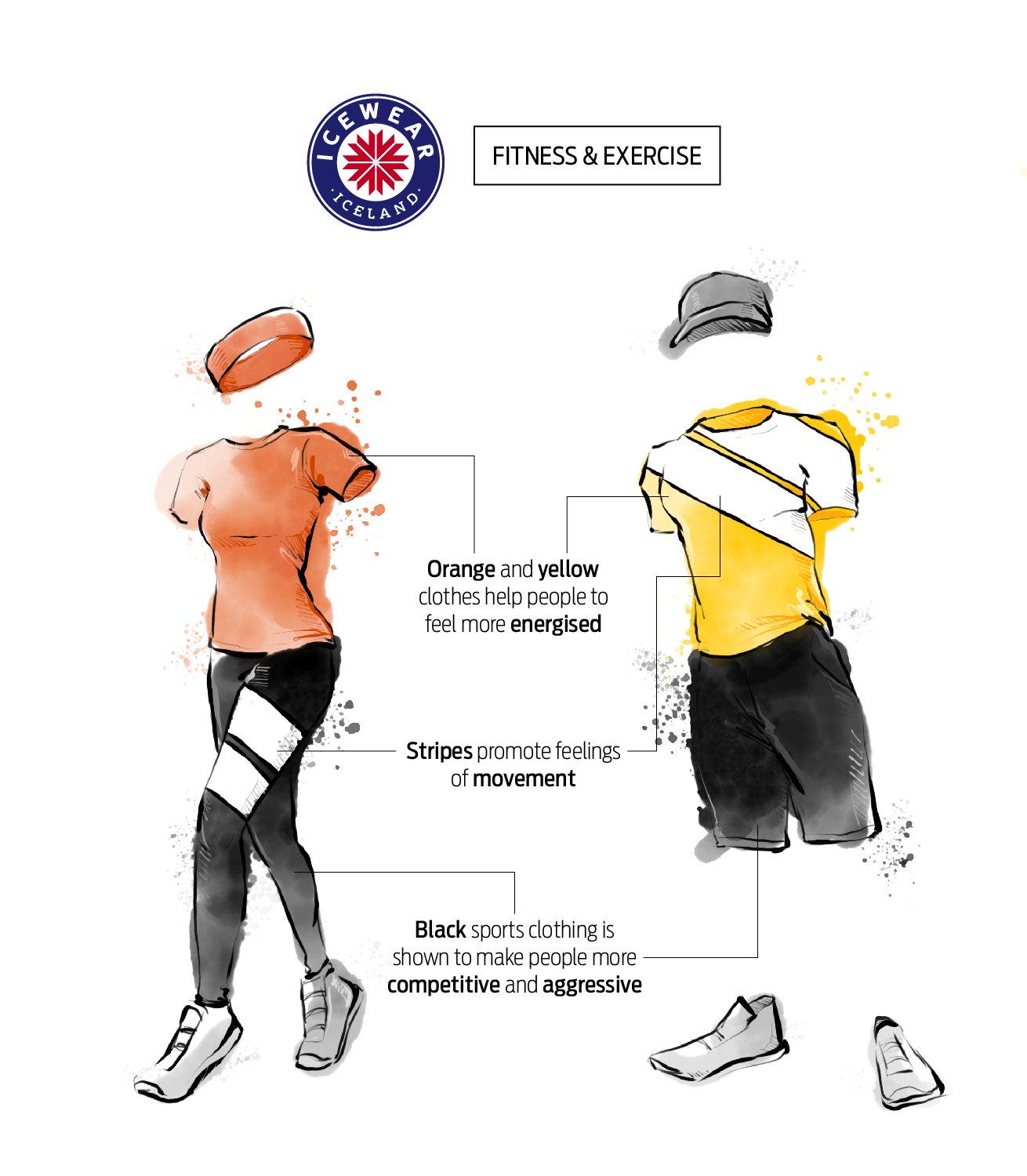 We all know that workout gear is likely the best choice for exercising: it’s what it was designed for afterall! But our research also found that superhero t-shirts (specifically Superman’s famous Kryptonian ‘S’ symbol of hope) made people think they were stronger than they were and ‘superior’ to others. If you struggle to get up and out in the morning for an early run or spot of yoga, you should immediately change into workout clothes (preferably with yellow or orange on) and you’ll feel more energized and motivated. If your exercise comes in the form of hiking, get your walking boots on with outdoors trousers and a bright top (preferably orange/yellow) and head outside asap to keep that fresh burst of motivation.
Here’s what the science says about clothing for fitness:
We all know that workout gear is likely the best choice for exercising: it’s what it was designed for afterall! But our research also found that superhero t-shirts (specifically Superman’s famous Kryptonian ‘S’ symbol of hope) made people think they were stronger than they were and ‘superior’ to others. If you struggle to get up and out in the morning for an early run or spot of yoga, you should immediately change into workout clothes (preferably with yellow or orange on) and you’ll feel more energized and motivated. If your exercise comes in the form of hiking, get your walking boots on with outdoors trousers and a bright top (preferably orange/yellow) and head outside asap to keep that fresh burst of motivation.
Here’s what the science says about clothing for fitness:
- Orange, yellow and pink are the top colours for helping people feel more energised and healthy.
- Black sports gear has been shown to make teams feel and appear more aggressive in competitions.
- Stripes on sporting or outdoors clothing promote feelings of movement in individuals exercising, squares however can make people feel bored and unmotivated.
- The simple act of putting on workout gear, fitness trainers or hiking boots, has been shown to increase motivation in 70% of people performing exercise.
Best clothing for job interviews
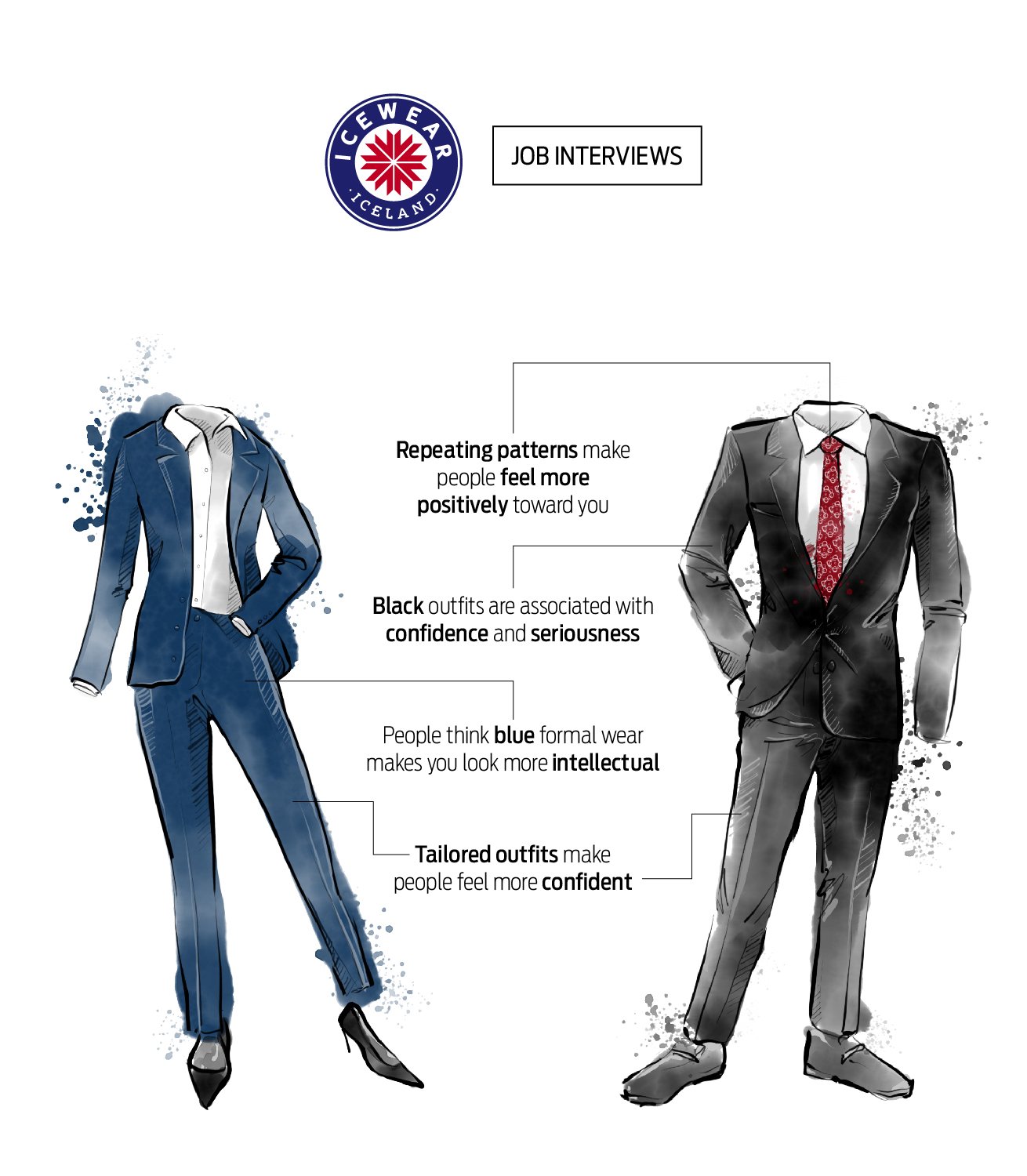 Overall, the best clothing for a job interview will depend on what job you’re applying for. Extremely formal attire may be appropriate for a top law-firm, but will make you look overdressed for a part-time job in a restaurant.
Here’s what the science says for these interview attire decisions:
Overall, the best clothing for a job interview will depend on what job you’re applying for. Extremely formal attire may be appropriate for a top law-firm, but will make you look overdressed for a part-time job in a restaurant.
Here’s what the science says for these interview attire decisions:
- Repeating, symmetrical patterns are proven to make people have a more positive view of you as your attire is more appealing to the eye.
- Typically, people associate black outfits with those who are confident and more serious, whereas blue helps to make the wearer feel more intellectual and clear-minded.
- The age-old ‘power dressing’ is actually proven to make people feel more serious - useful for approaching job interviews.
- Tailored outfits help people feel more confident and reflect positively on others.
- Splashes of red patterns can help to show assertiveness in oneself.
Best clothing to destress
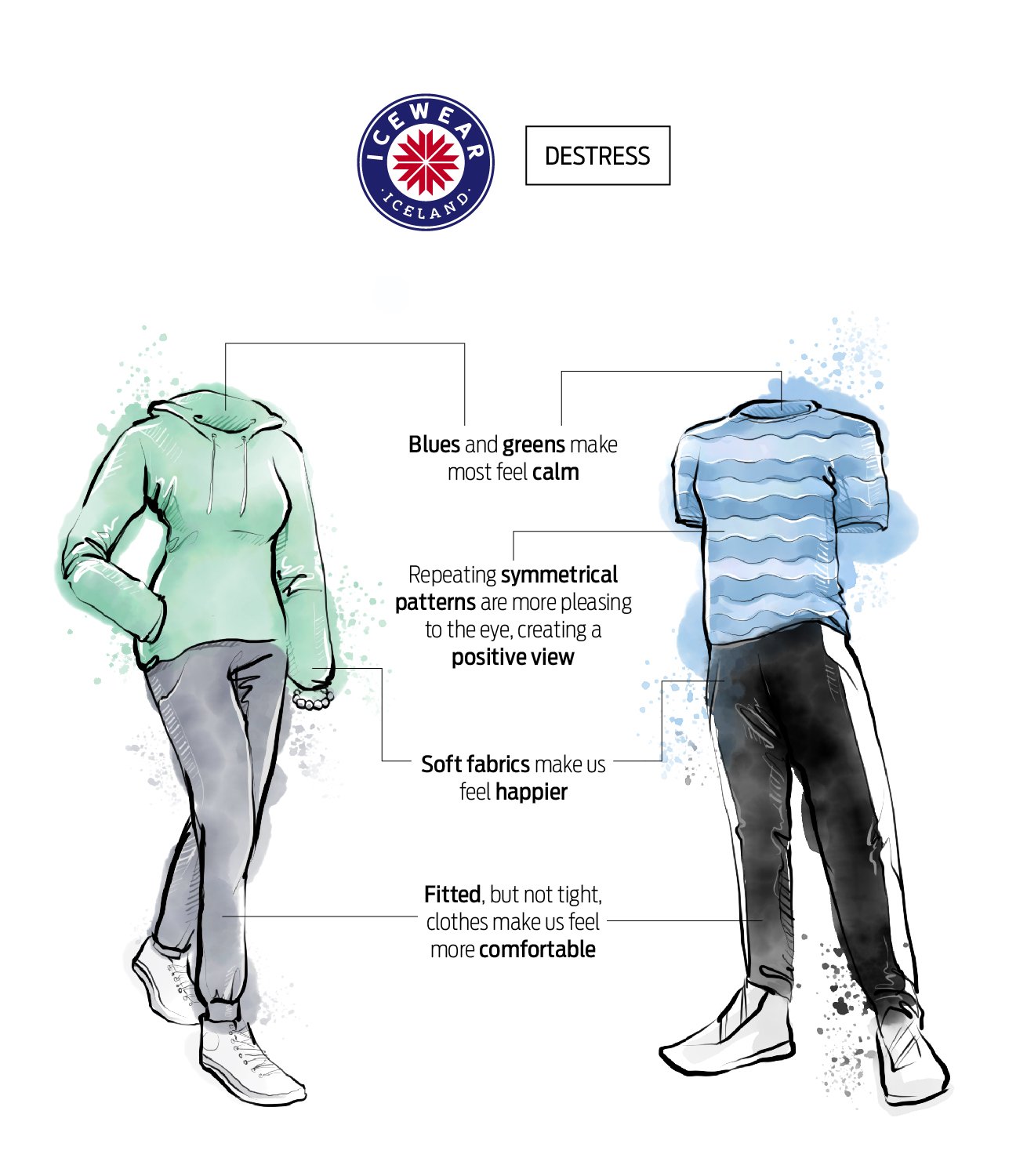 To be calm and destress, the best clothes are going to be ones you thoroughly believe will make you feel calm and comfortable. If you want to take a look at what the research says however, you should consider;
To be calm and destress, the best clothes are going to be ones you thoroughly believe will make you feel calm and comfortable. If you want to take a look at what the research says however, you should consider;
- Blue colour scheme or calming pastels like sky blue, lavender and peppermint, becoming more popular in 2021. Blues, greens, whites and greys are useful in helping people feel calm.
- Soft-to-touch fabric like silk or high-quality cotton or wool are great tools to feel calm and positive.
- Items that have a pleasing sound (jangle of beads, rustle of taffeta, etc.) make us happier.
- Repeating, subtle, symmetrical patterns with curved shapes, not angular lines help to make people think more positively.
- Work out what you deem your ‘favourite’ comfortable clothing and that will be associated with calming and relaxed feelings.
- Well-fitted clothes can help you feel more comfortable and grounded, but others may prefer to have as loose as possible when trying to find their calm zone.
Best clothing for dating
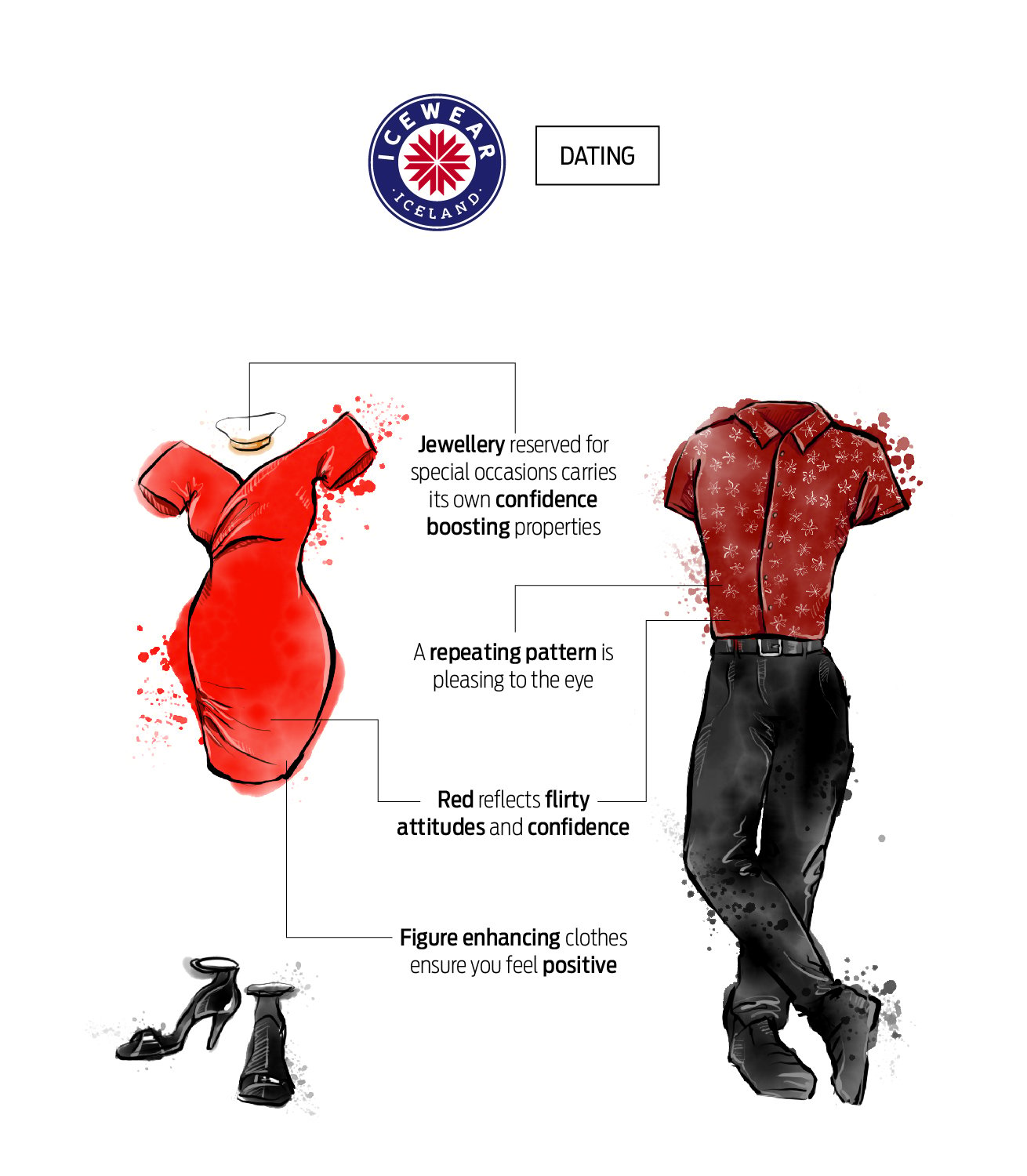 Dating is a good time to show your individuality so you may have certain colours or outfits you prefer. The science however, states that certain colours, patterns, and fashion choices can help you in your love life.
Dating is a good time to show your individuality so you may have certain colours or outfits you prefer. The science however, states that certain colours, patterns, and fashion choices can help you in your love life.
- Red continues to reflect flirtatiousness and confidence in society and is perfect for dating.
- Figure enhancing clothes will ensure you feel more positive and will reflect this to other people.
- Floral patterns are prevalent in 2021 indicating an eye for fashion while a repeating pattern is pleasing to the eye immediately granting a good impression.
- Wear jewellery you associate with feeling your best and confident as this will transfer to each outfit through ‘enclosed cognition’ .
- Clothes should be comfortable to allow you to feel confident so if you are not a fan of heels or tight new shoes it might be best to try something else.
Which patterns are best to wear?
Patterns will change with fashion. Something like the checked shirt, or striped t-shirt continue to stand the test of time, but there is science to suggest different patterns make us feel differently.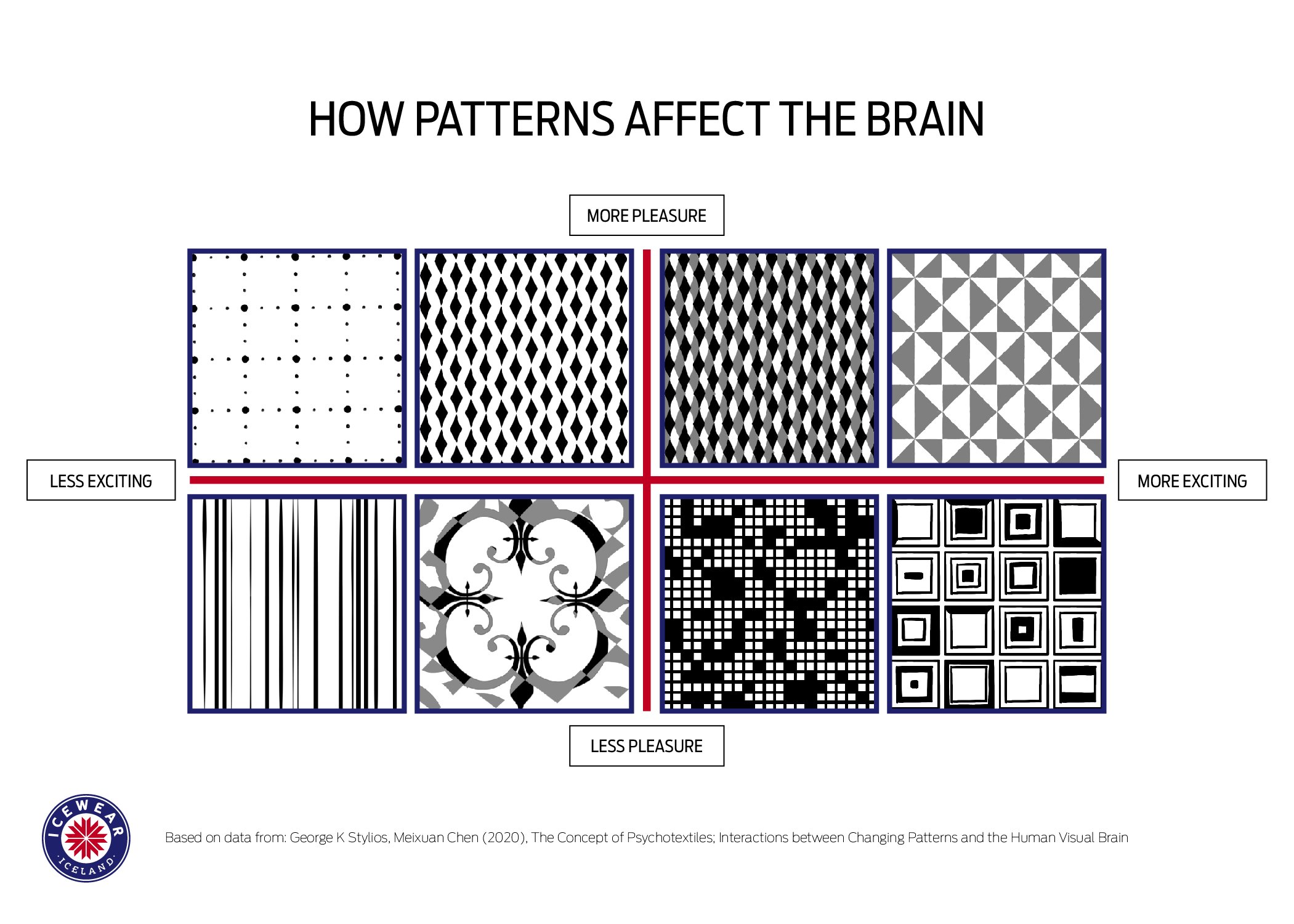 A study that is representative of the population found that theta brain waves increased for repeating patterns, indicating people take more pleasure in these compared to non-repeating ones. In addition to that, people were more excited by intense patterns than weak subtle ones.
A study that is representative of the population found that theta brain waves increased for repeating patterns, indicating people take more pleasure in these compared to non-repeating ones. In addition to that, people were more excited by intense patterns than weak subtle ones.
Here’s the rundown on patterns and feelings:Repeating patterns increase theta brain waves - a pleasure signal
- If you want your outfit to be pleasing but not obtrusive you should opt for a repeating pattern that isn’t intense.
- If you want to appear exciting and pleasing you would choose an intense repeating pattern.
Should I buy a new wardrobe?
Probably not, but you should consider what makes you feel your best and whether your clothes are impacting social and professional interactions. The studies we analysed are done on a range of people and try to show how the average person may be changed by their style choices. It does prove useful to understand how others may see you too and what you want to outwardly project for your next date, conference call, coffee and catch-up, financial meeting, or exercise session. Clothes, particularly their colours and patterns, have much more meaning than you may have thought, like the symmetrical patterns on our Icelandic jumpers, which create positive emotions in people. However, most importantly, wear what works for you.Methodology
We reviewed a range of studies (listed below) that were available prior to and on 10th March 2021. These studies were reviewed looking for the impact clothing items, patterns, colours and styles have on people. The results and findings from these studies were collated into one index to group and compare how different clothes tend to make the majority of people feel. This analysis accepts that not every individual will associate the same meaning to the same items, but it does find consistent various global associations the majority will associate meaning to. Sources- Hajo Adam, Adam D. Galinsky (2012), ‘Enclothed cognition’, Journal of Experimental Social Psychology,, (http://www.utstat.utoronto.ca/reid/sta2201s/2012/labcoatarticle.pdf) [accessed 10th March 2021]
- Professor Karen J Pine, Mind What You Wear: The Psychology of Fashion, 2014 ed.
- Michael L. Slepian, Simon N. Ferber, Joshua M. Gold, Abraham M. Rutchick (2015) ‘The Cognitive Consequences of Formal Clothing’, Social Psychological and Personality Science, Vol. 6, Issue 6, (March 31st, 2015) (https://journals.sagepub.com/doi/abs/10.1177/1948550615579462) [accessed 10th March 2021]
- Psychology of Clothing https://cravingcurrent.com/psychology-of-clothing/, [accessed 10th March 2021]
- Wright (2008), in ‘The Effects of Color on the Moods of College Students’, Feb, 2014 https://journals.sagepub.com/doi/full/10.1177/2158244014525423, [accessed 10th March 2021]
- V. Ranjana, V. Vishnu Priya, R. Gayathri (2020), ‘Awareness on psychology of colors among IT professionals’, Drug Invention Today, https://jprsolutions.info/files/final-file-5f3a35dc556dc0.34300570.pdf, [accessed 10th March 2021]
- Marcel P. Lucassen,* Theo Gevers, Arjan Gijsenij (2010) ‘Texture Affects Color Emotion’, Intelligent System Laboratory Amsterdam, University of Amsterdam, Amsterdam, The Netherlands, (https://staff.fnwi.uva.nl/th.gevers/pub/ColorResearchAppl2010.pdf) [accessed March 10th 2021]
- Eklund, A. A., & Helmefalk, M. (2018). Seeing through touch: A conceptual framework of visual-tactile interplay. The Journal of Product and Brand Management, 27(5), 498-513.
- Mete, F. (2006). The creative role of sources of inspiration in clothing design. International Journal of Clothing Science and Technology, 18(4), 278-293.
- George K Stylios, Meixuan Chen (2020), The Concept of Psychotextiles; Interactions between Changing Patterns and the Human Visual Brain, by a Novel Composite SMART Fabric (https://pubmed.ncbi.nlm.nih.gov/32033459/)
- Psychological Effects of Color & Design on Clothing Selection (https://study.com/academy/lesson/psychological-effects-of-color-design-on-clothing-selection.html) [accessed March 10th 2021]
- Redefining clothing care: P&G innovates in the face of the growing lifestyle and fashion athleisure trend that is dominating consumers' wardrobes. (2015, Dec 02). Business Wire New York [New York] 02 Dec 2015.
- Gallagher, J., & Satran, R. (2020, May 23). OFF DUTY --- style & fashion: Oh, to dress up again! --- as WFH days drag on, we're sick of slippers and sweatpants, and crave the expressiveness and decorum of 'real clothes.' here's what notable style insiders dream of wearing again -- and how they foresee fashion evolving post-pandemic. Wall Street Journal Eastern edition; New York, N.Y. [New York, N.Y]23 May 2020: D.1.
- Dalgin, M. H., Sraiheen, A., & Akcay, O. (2018). GENDER DIFFERENCES IN PRODUCT COLOR IMPORTANCE, COLOR CHOICE, AND MEANING OF COLOR: A CROSS-COUNTRY STUDY. Journal of Business and Behavioral Sciences, 30(1), 88-99.
- Velasquez, A. (2020). Designers use color as a mood enhancer in S/S '21 collections. Sourcing Journal (Online), New York (Oct 15, 2020).
- https://www.sandiegohomefinder.com/blog/calming-interior-design-tips/

